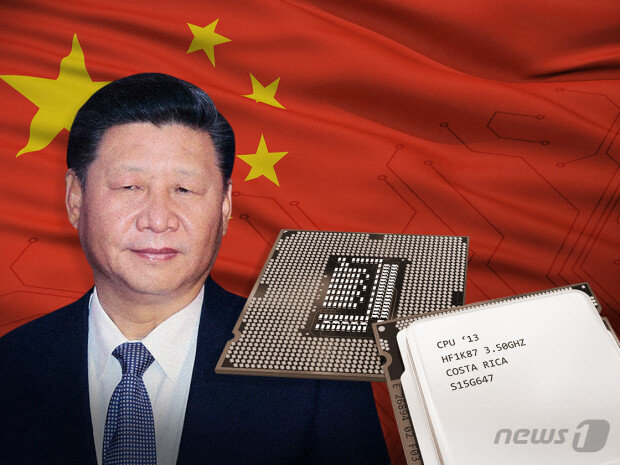
Korea has been overtaken by China in its core technological capabilities in the semiconductor sector in just two years, according to a new report. This is a warning sign that Korea's semiconductor industry is losing its technological momentum amid various challenges, including a government leadership vacuum and trade threats from U.S. President Donald Trump.
According to a report by the Korea Institute of Science & Technology Evaluation and Planning (KISTEP) on Sunday, a survey of 39 semiconductor experts in Korea found that, as of last year, Korea lagged behind China in four of the five core semiconductor technologies: high-density memory, high-performance artificial intelligence (AI) semiconductors, power semiconductors, and next-generation high-performance sensing. It was rated at the same level as China in advanced packaging technology. In the previous 2022 survey, Korea rated ahead of China in the memory, sensing, and packaging sectors but has since been overtaken or caught up with in just two years
The survey was conducted by selecting semiconductor experts from those who participated in KISTEP’s 2022 Technology Level Assessment. The assessment is conducted every two years to evaluate the country's core technologies in accordance with the Framework Act on Science and Technology. The semiconductor evaluators included university professors and researchers from industry, academia, and research institutes, as well as professionals from large companies and small- and medium-sized enterprises in materials, components, and equipment.
Experts are increasingly concerned that Korea has ceded its major strengths in memory, sensing, and packaging technologies to China. The report found that while Korea remains ahead of China in process and mass production technologies within the semiconductor technology lifecycle, it lags behind China in basic and fundamental research and design technologies and even ranks last among other major countries.
China's push into Korea's traditional major technologies is not limited to semiconductors. Last year, Chinese companies overtook Korea for the first time in global TV shipments, putting their super-sized products at the forefront. In the premium smartphone and display markets, Chinese companies are also threatening Samsung and LG's market share. "Securing core technologies that can serve as a strategic card for Korea in the global value chain is crucial," said Jeong Eu-jin, a researcher at KISTEP. "Efforts to secure talent are urgently needed, including incentives for the industry to nurture skilled individuals and immigration policies to attract overseas professionals."

'Korea overtaken by China in semiconductor technology,' says a report
Korea has been overtaken by China in its core technological capabilities in the semiconductor secto…
www.donga.com

